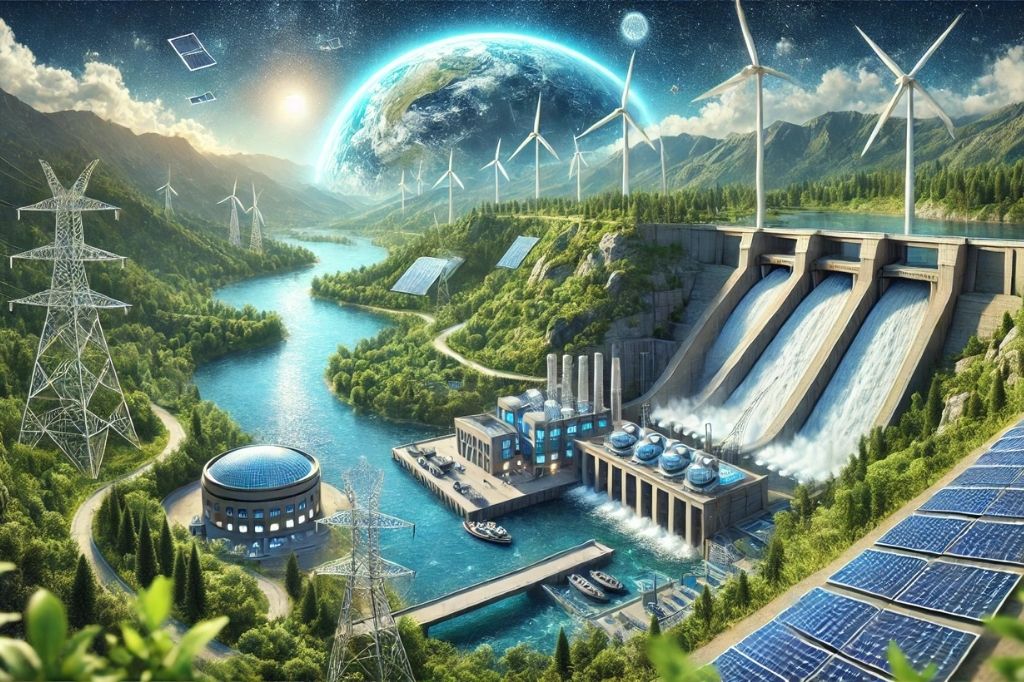There is a fight for a throne in America’s energy world. Will wind, solar or hydro power be the leader?* Hydrogüç, for years, “No one can dethrone me from my throne!” he was a leader, as if to say, but now the wind turbines and solar panels are saying, “Hey king, move out a little and we’ll settle in!” he says. So is hydropower really the main renewable energy source in the USA? Let’s get our coffee, let’s talk about this with fun and knowledge!
Hydropower: The Former Owner of the Throne?
If you look at the energy history of the United States, hydropower is almost like a superhero. This is where it all started. But things seem to be changing…

1. The Golden Age of Dams: No one has heard of the Hoover Dam. This giant structure not only produces energy, but also manages water, irrigates and even attracts tourists. But this size also brings ecological problems with it.
2. Is He Losing His Share? Hydropower accounts for 6-7% of the US’s renewable energy production. It’s not a bad number, but it used to be much more dominant. Now solar and wind energy are rapidly taking over this throne.
3. Environmental Problems: When dams block the way of rivers to produce energy, the fish are surprised, the ecosystem is disrupted. These “non-innocent” aspects of hydropower are being discussed.
Wind and Solar Energy: New Competitors
Hydro power has been the leader for many years, but solar and wind energy have been on the rise recently. It’s almost like the young competitors come on stage and say, “There’s us now!” he says.
1. Wind Energy: Giant turbines in Texas convert wind into electricity. So much so that in 2021, wind became the largest renewable energy source in the United States. Could Hydropower be a little jealous?
2. Solar Panels: California is shining with solar panels. These panels, which are spread not only on roofs, but also on large areas, are both an environmentally friendly and economical solution.
3. Technology Support: Solar and wind energy have become much more efficient with new technologies. Moreover, startup costs are decreasing, so everyone will one day say, “I also have a solar panel!” he might say.
The Future of Hydropower: Is It a Transformation Story?
Although hydropower seems to have lost its place, it will not completely disappear in the future. It just needs a little “update”.

1. Old Dams, New Systems: If existing dams are modernized, both more energy can be generated and environmental damage can be reduced. We can get excited for the second spring of dams!
2. Small Hydropower Projects: A more environmentally friendly solution can be achieved with small-scale projects instead of large dams. Especially in rural areas, such projects can be of great benefit.
3. Climate Effects: Changing precipitation patterns and drought make the future of hydropower somewhat uncertain. There’s no water, there’s no energy, right?
Diversity in the US Energy Strategy
The energy strategy of the United States attracts attention with its diversity. Different sources such as hydropower, solar and wind energy are used Decoupled.
1. The Power of Diversity: Having a variety of resources is like insurance against energy crises. Both economic and environmental risks are decreasing.
2. Transition Process: The transition from fossil fuels to renewable sources will take some time. But it would be unfair to say that hydroelectric power will completely lose its place in this process.
3. Policies and Supports: Incentives for renewable energy projects accelerate the transition. The US government is taking serious steps in this regard and investing in the future.
The Role of Hydropower is Changing, but It Does not End
Is hydropower the main renewable energy source in the USA to the question “Yes, but the throne is shaking!” we may say. While wind and solar energy are growing rapidly, hydroelectric power still has an important place.
The energy future of the United States will be shaped by innovative technologies and environmentally friendly policies. Hydropower, on the other hand, will continue to be one of the important parts in this transition. How do you think an energy system that embraces both the power of the past and the innovations of the future would work? Let’s think and shape the future together!